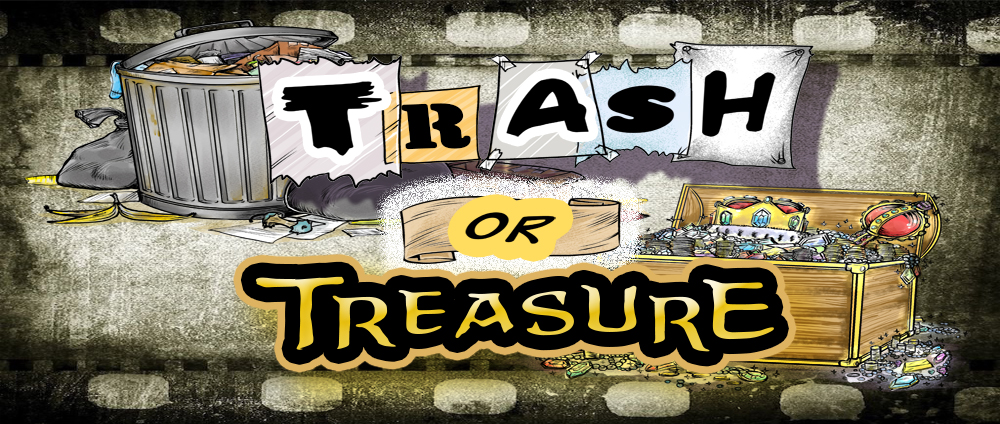The Strange Case of Dr Jekyll and Mr Hyde has, over the 134 years since it was first published, earned its place as a work of horror fiction so ubiquitous within pop culture that most people know the basic story without having needed to read the book. However, unlike it’s more camera-friendly equals of Frankenstein or Dracula, it’s also one that an audience is unlikely to have seen on the big screen in anything like its original form. Modern world retellings, comedy twists (normally involving the perceived hilarity of a gender switch), and outright plot bastardization abound, to varying degrees of success (and If you must watch The Nutty Professor then for god’s sake make it the 1963 Jerry Lewis one!) So, upon having this made-for-TV version present itself via the “you may also like” feature, and then finding out that it is considered by many to be pretty damn close to the source material, I decided to fix this gap in my viewing history. Plus, it stars Jack Palance; and whilst I’ve seen him in some absolute garbage, I’ve always ended up enjoying the film because “ooh, Jack Palance is in it!”
Things start with Dr Henry Jekyll (Jack Palance) giving a talk on the nature of evil to a bunch of clamouring Victorian gentlemen with an assortment of hats and facial hair. During this, and his further conversations with his confidant and lawyer George Devlin (Denholm Elliott), we see a very restrained, somehow closeted man, who is unwilling to enter a yelling match but ready to stand firm with his beliefs. We are also presented with his noble ideas of separating the base and “evil” from man to leave only the uplifting and “good”, and discussion is had on what this would mean to a man.
Things move at a rapid pace onto the Dr in his laboratory, a haven of expensive glassware and interestingly coloured liquids found in the shed of Jekyll’s extensive town house. Fans of Mad Science will cherish these moments, as the passions of Henry are seen for the first time, and Palance gets to chew through dialogues and equipment-fiddling with perfect aplomb. Things then lead to complications of lost time for Jekyll, and the growing mystery of just whomever the Mr Hyde, that Jekyll seems to be associating with during his blackouts, actually is.
The good doctor’s investigations lead him through the streets of London, and then to a house of ill repute, run by “Two Ton” Tessie O’Shea and presenting dance acts that let her phenomenal singing prowess be put in the limelight without feeling shoe-horned. There we also meet Hattie (Elizabeth Cole), the target of Mr Hyde’s lecherous affections, and from there the sinister, bacchanalian Mr Hyde.
Whilst the makeup used to show the physical transformation from Jekyll to Hyde would be considered basic to the modern viewer, the effect is still powerfully effective do the work of Jack Palance to sell the two characters. His whole demeanour, movement, and shape changes depending on who is in control of the body, and Hyde carries an imminent sense of lust, selfishness, and raw violence which is at total odds to the Doctor’s values. This is a tour de force of acting, which also carries a subtlety to it that draws you into accepting the unbelievable with ease.
That same subtlety is shown through the rest of the piece, with heavy coding for the unseemly parts of Soho life and horrific acts of brutality we are witness to. Murder, rape, torture, and bawdy behaviour are all included, but toned down for the TV in a way that maintains your distaste but avoids the salaciousness of other works. The producers use the restraints of its broadcast medium to force it’s actors to work harder to convey meaning, and it’s production team to use detail and layering to provide a sense of reality to the world those actors are in. So, whilst it may not live up to the standards of the more opulent productions that followed it, those who enjoy costumery and period dramatics will be in for a wealth of delights.
Another positive result of being a television movie is the pacing that is maintained. Whilst the work comes in at a mighty two hours, the time whips past at an enthralling, engaging rate as it is separated into eight 15-minute chunks. These sections themselves are further portioned into three-part acts, each around 5 minutes long, meaning that whilst the pace of individual scenes are allowed to ebb and flow as required, the overall tempo of the narrative is maintained. It covers a lot of ground, but it neither gets dull and nor feels rushed.
This may still be too long for some, especially when the core plot points are so well known that any mystery is wrecked by being aware of exactly what is up. Purists might also find it frustrating that the plot is so close to the original, but still felt the need to take liberties with viewpoints, characters, and the overall timeline. But, if you can handle one of the most spoilered stories in history and are up for Jack Palance holding court with your attention for 120 minutes then this is a Treasure for you to get your teeth into.
